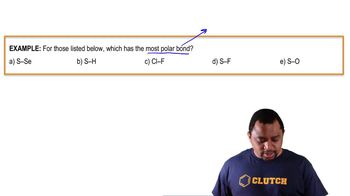Arrange the following molecules in order of decreasing dipole moment.
H–I H–F H–Br H–Cl
 Verified step by step guidance
Verified step by step guidance Verified video answer for a similar problem:
Verified video answer for a similar problem:



 1:51m
1:51mMaster Dipole Moment (Simplified) Concept 1 with a bite sized video explanation from Jules
Start learning